3.4: Factor Theorem and Remainder Theorem
( \newcommand{\kernel}{\mathrm{null}\,}\)
In the last section, we limited ourselves to finding the intercepts, or zeros, of polynomials that factored simply, or we turned to technology. In this section, we will look at algebraic techniques for finding the zeros of polynomials like
Long Division
In the last section we saw that we could write a polynomial as a product of factors, each corresponding to a horizontal intercept. If we knew that
Example
Divide
Solution
Start by writing the problem out in long division form

Now we divide the leading terms:
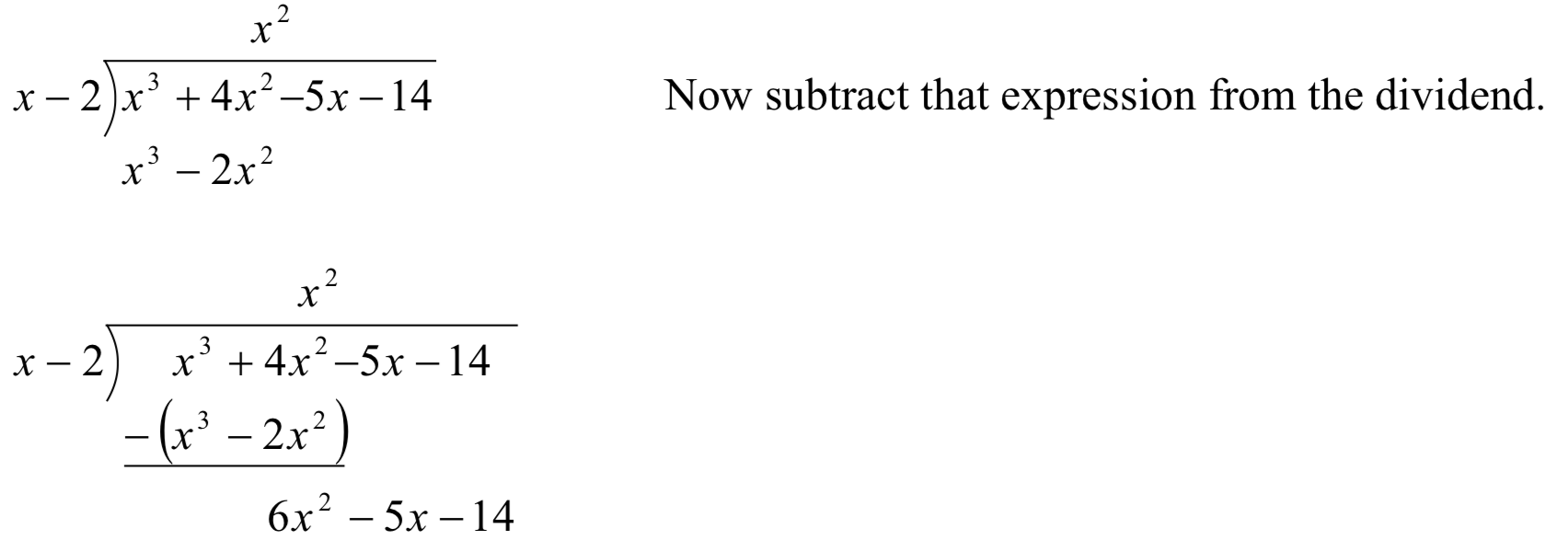
Again, divide the leading term of the remainder by the leading term of the divisor.
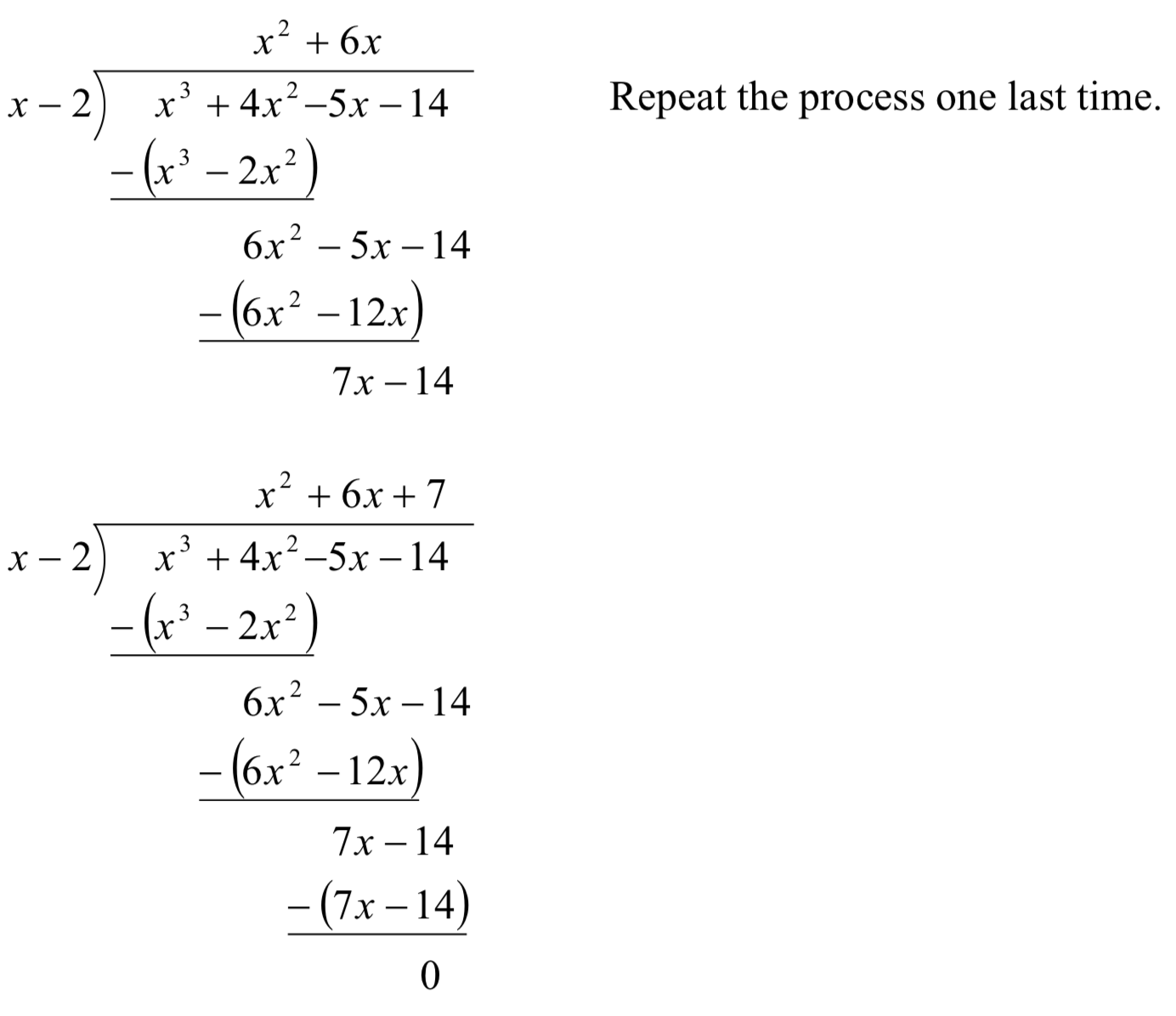
This tells us
This gives us a way to find the intercepts of this polynomial.
Example
Find the horizontal intercepts of
Solution
To find the horizontal intercepts, we need to solve
The horizontal intercepts will be at
Exercise
Divide
- Answer
-
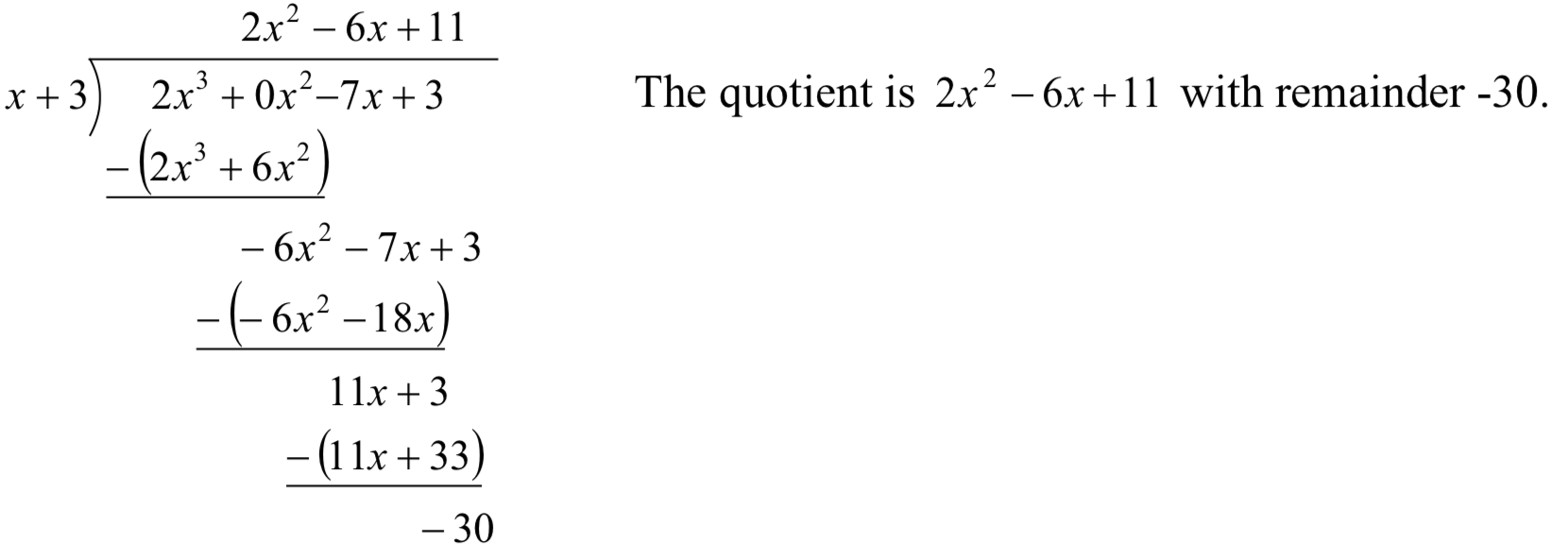
The Factor and Remainder Theorems
When we divide a polynomial,
Because of the division, the remainder will either be zero, or a polynomial of lower degree than d(x). Because of this, if we divide a polynomial by a term of the form
If
The Remainder Theorem
If
If
If
the factor theorem
If
Synthetic Division
Since dividing by
Let’s look back at the long division we did in Example 1 and try to streamline it. First, let’s change all the subtractions into additions by distributing through the negatives.

Next, observe that the terms
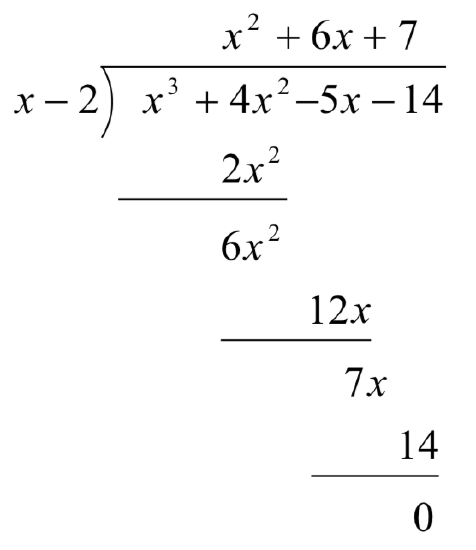
Now, let’s move things up a bit and, for reasons which will become clear in a moment, copy the
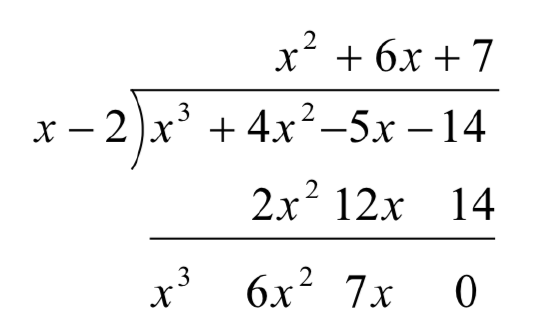
Note that by arranging things in this manner, each term in the last row is obtained by adding the two terms above it. Notice also that the quotient polynomial can be obtained by dividing each of the first three terms in the last row by
This means that we no longer need to write the quotient polynomial down, nor the
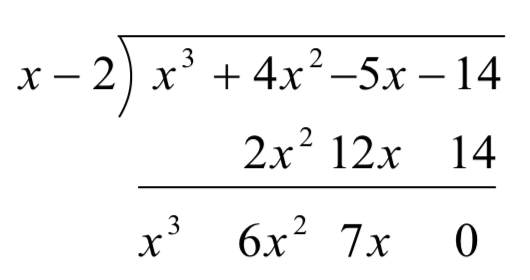
We’ve streamlined things quite a bit so far, but we can still do more. Let’s take a moment to remind ourselves where the
We have constructed a synthetic division tableau for this polynomial division problem. Let’s re-work our division problem using this tableau to see how it greatly streamlines the division process. To divide

Next, take the 2 from the divisor and multiply by the 1 that was "brought down" to get 2. Write this underneath the 4, then add to get 6.

Now take the 2 from the divisor times the 6 to get 12, and add it to the -5 to get 7.

Finally, take the 2 in the divisor times the 7 to get 14, and add it to the -14 to get 0.

The first three numbers in the last row of our tableau are the coefficients of the quotient polynomial. Remember, we started with a third degree polynomial and divided by a first degree polynomial, so the quotient is a second degree polynomial. Hence the quotient is
Example
Use synthetic division to divide
Solution
When setting up the synthetic division tableau, we need to enter 0 for the coefficient of
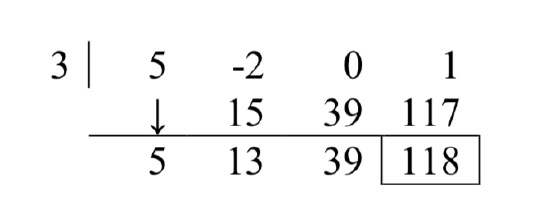
Since the dividend was a third degree polynomial, the quotient is a quadratic polynomial with coefficients 5, 13 and 39. Our quotient is
It also means that
Example
Divide
Solution
For this division, we rewrite
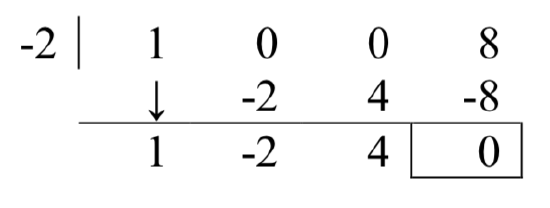
The quotient is
Exercise
Divide
- Answer
-
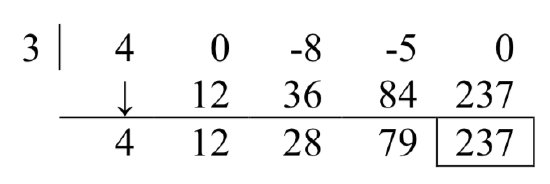
Using this process allows us to find the real zeros of polynomials, presuming we can figure out at least one root. We’ll explore how to do that in the next section.
Example
The polynomial
Solution
Since

From the first division, we get
To find the remaining intercepts, we set
Note this also means
Important Topics of this Section
- Long division of polynomials
- Remainder Theorem
- Factor Theorem
- Synthetic division of polynomials


